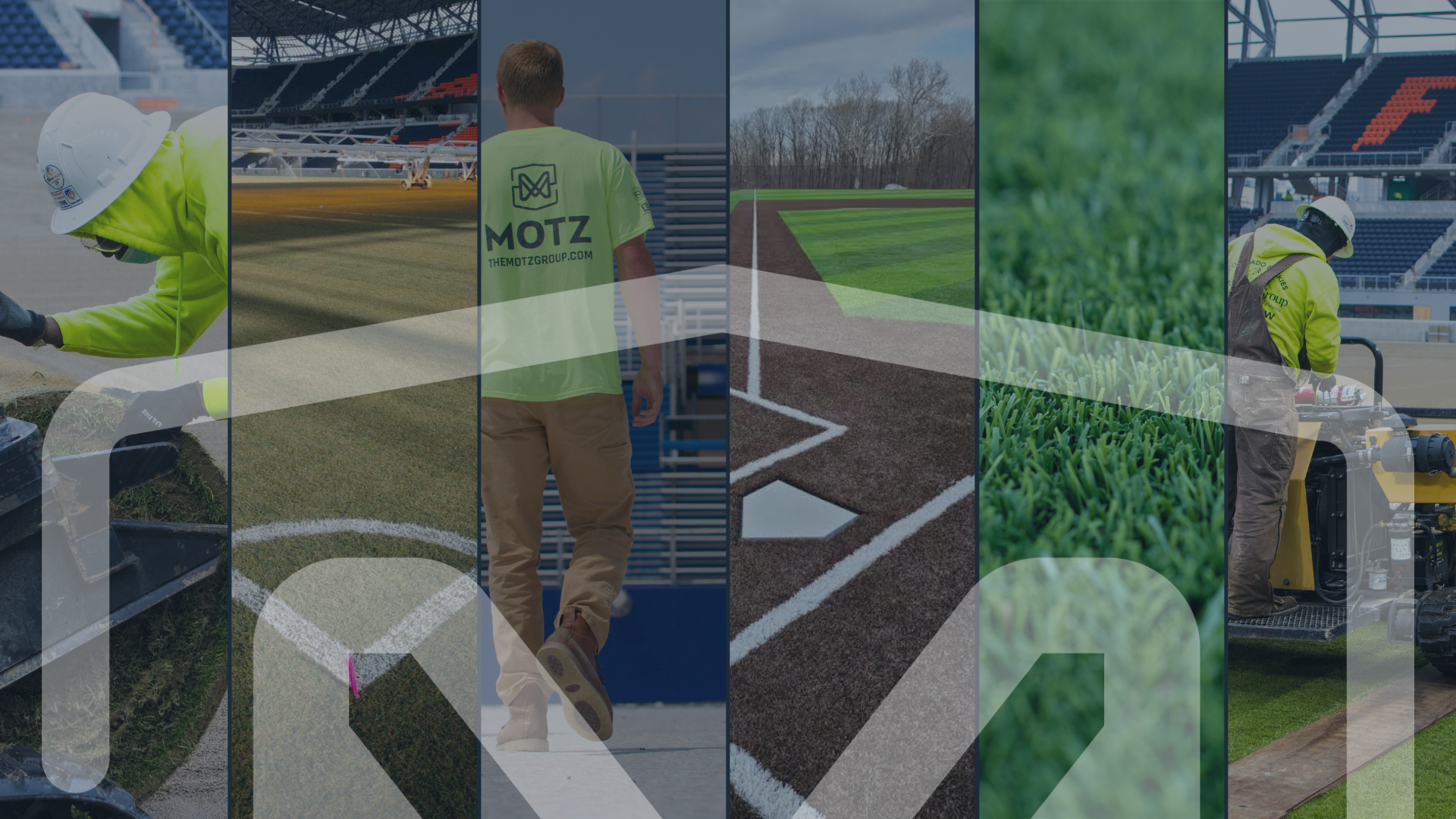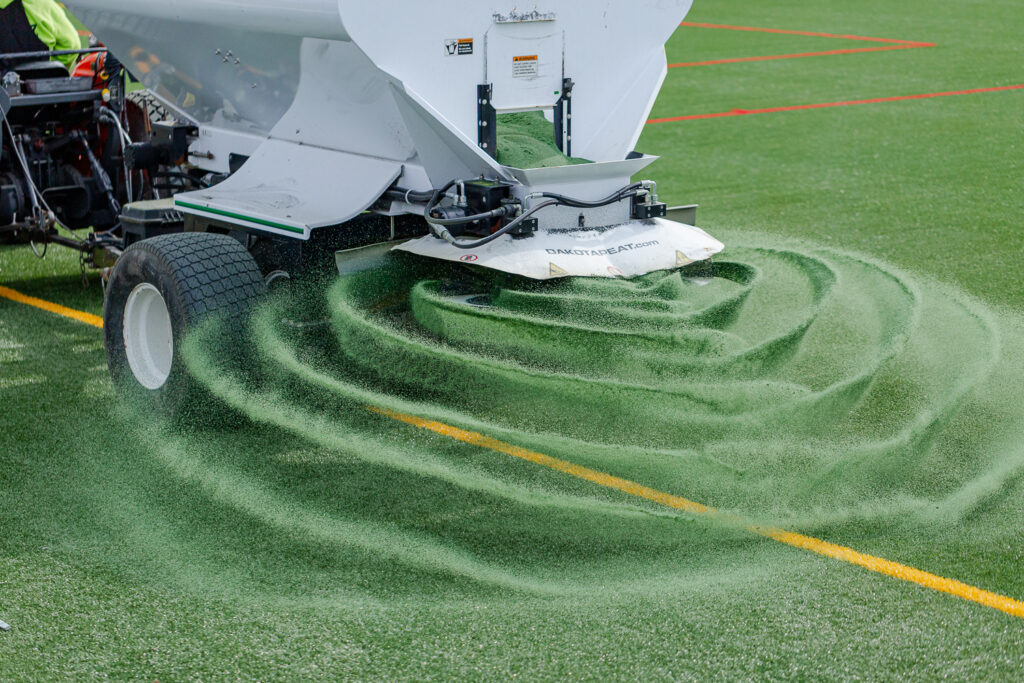
Sports Field Blog
Subscribe To Email Updates
Subscribe to our weekly newsletter and we’ll send updates straight to your inbox
Installing Your Turf Field with a Pad
Including a pad in the installation of an artificial sports field will provide a consistent surface for the athletes. The surface stays stable throughout changes in weather, temperature, movement and time which gives athletes the confidence of a safer playing surface. Areas of heavy movement will naturally displace infill. Where infill is lacking, players who fall will come in direct contact with the hard surface of base rock directly under the turf. A pad will absorb shock from movement but its most important function is to provide impact absorption to prevent serious injury. Brain injury prevention has been at the forefront of athletic dialogue in recent years- installation of pads on sports fields is an important step in decreasing the likelihood of potential sports-related concussions.
Pads, which vary in width between 0.3 inches and 2.0 inches (although we don’t recommend anything less than 0.5 inches), are installed between the base rock and turf. Their lifecycle is longer than that of turf and can be used a second time, when the turf is replaced. Most pads have a warranty that varies between 16 and 25 years.
The lifecycle of a sports field is lengthened and strengthened by including a pad. Without a pad, the micro movements between the turf surface and the base rock beneath can break down turf prematurely – diminishing its playability and shortening its lifecycle. A pad, when installed correctly, will insulate those micro movements by acting as a barrier between the turf and base rock.
A GMAX test measures the shock attenuation of body impact on a playing surface. A lower GMAX score means better shock absorption and less risk for injury. A system will begin to receive higher GMAX results the longer it’s in the ground- higher GMAX results indicate a need for field replacement to ensure the safest playing surface for athletes. A pad can reduce the score of GMAX levels at first install, but more importantly, it keeps the rate lower for the life of the field.
In a review of GMAX scores from a large subgroup of fields with and without pads throughout the Midwest, the following was concluded:
Sand/Rubber Fields Average GMAX Result By Year
| YEAR | WITH PAD | WITHOUT PAD |
|---|---|---|
| 1 | 106 | 129 |
| 4 | 116 | 142 |
| 8 | 116 | 164 |
The numbers above indicate that GMAX results on fields with pads not only start off lower, they continue to remain low, with little change throughout the first eight years. Fields with pads stayed within 10% of the original score while fields without pads had a rise in their GMAX result of about 27%.
We recommend a pad be included with any synthetic turf sports field. With many of the non-rubber infills on the market (including Envirofill and Safeshell,) a shock-absorption pad is required to ensure the safety of the athletes.
To learn more, check out our webinar all about pads, PADemonium.
Similar Blogs



